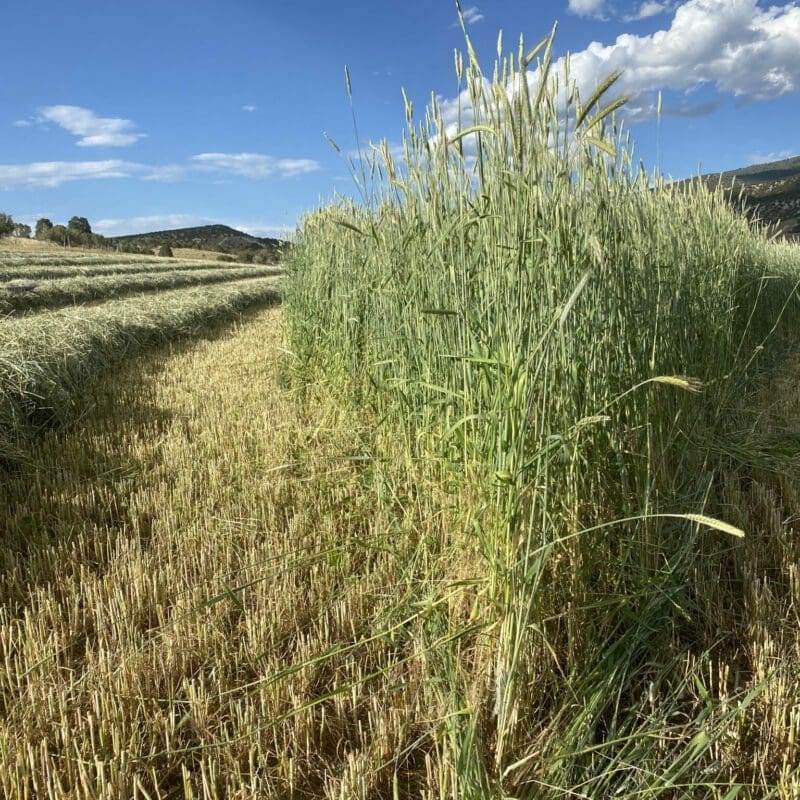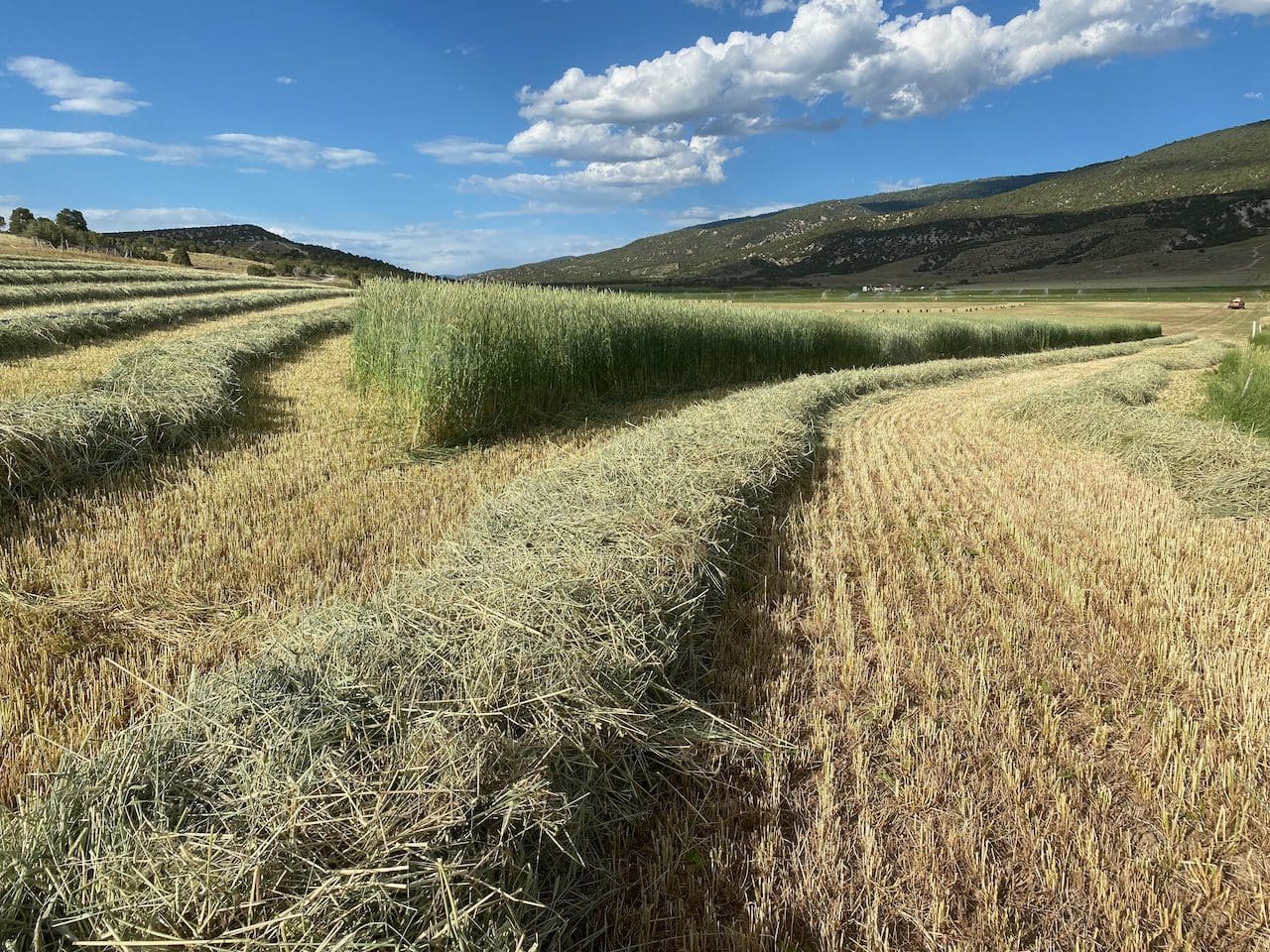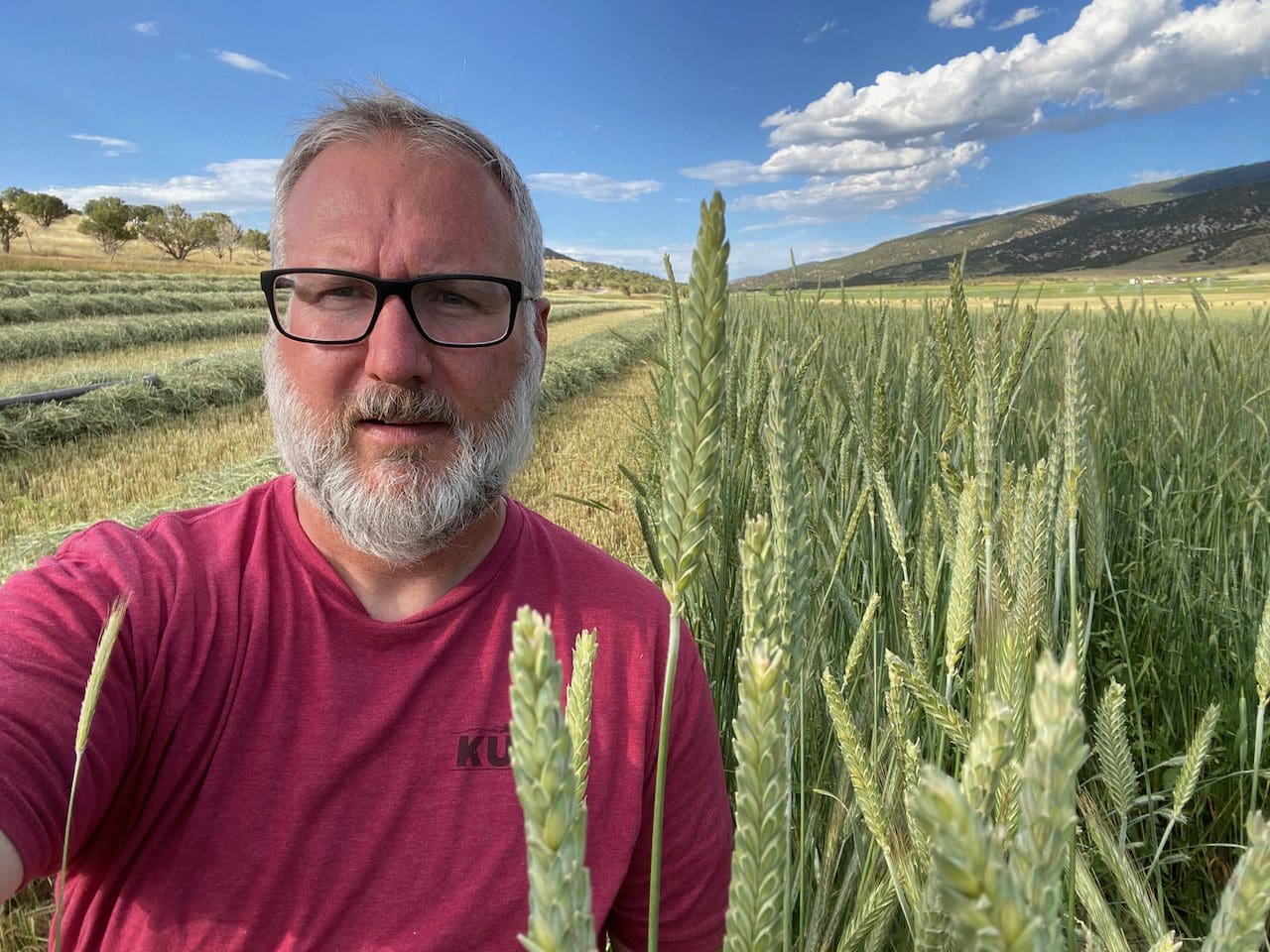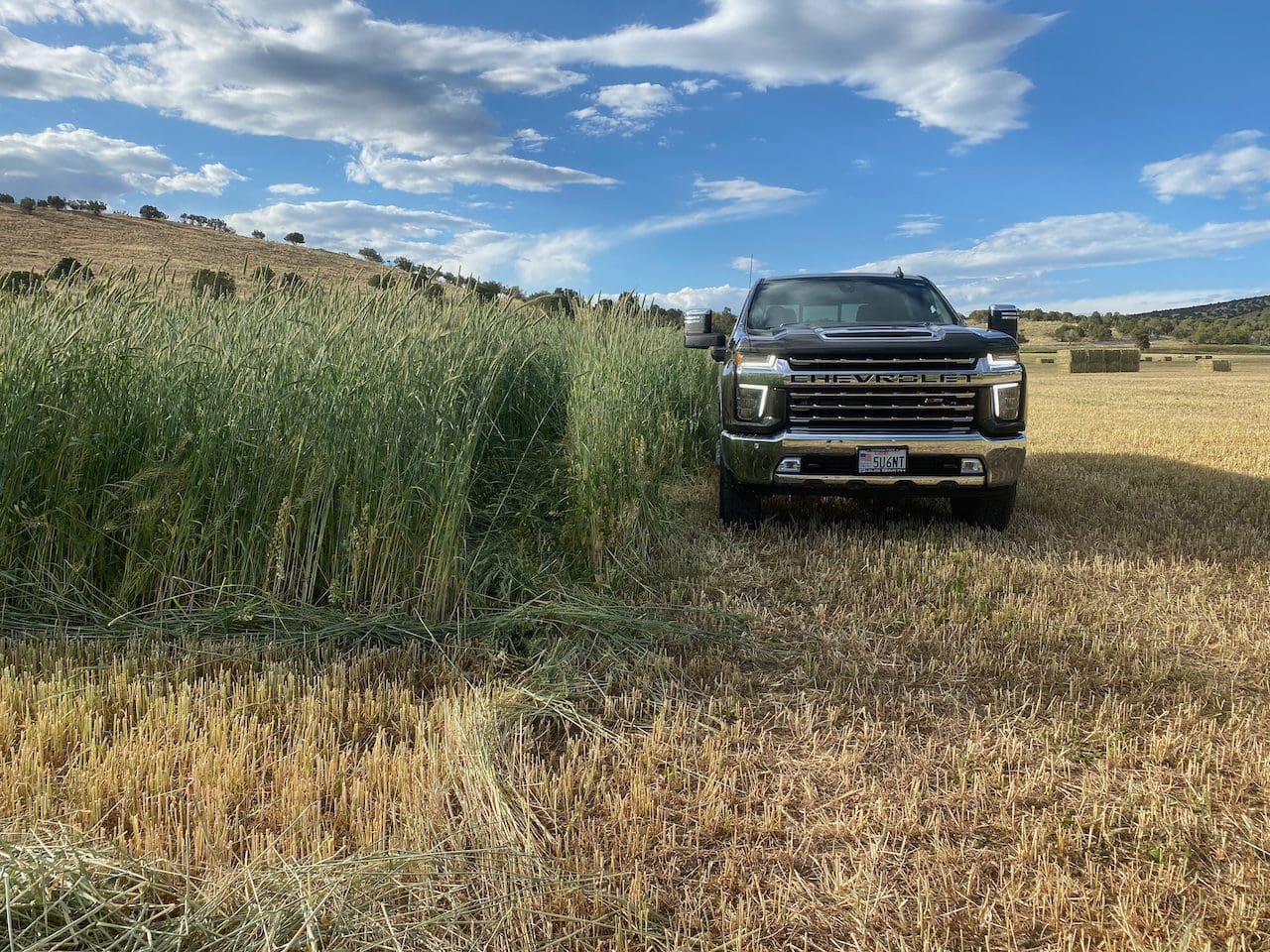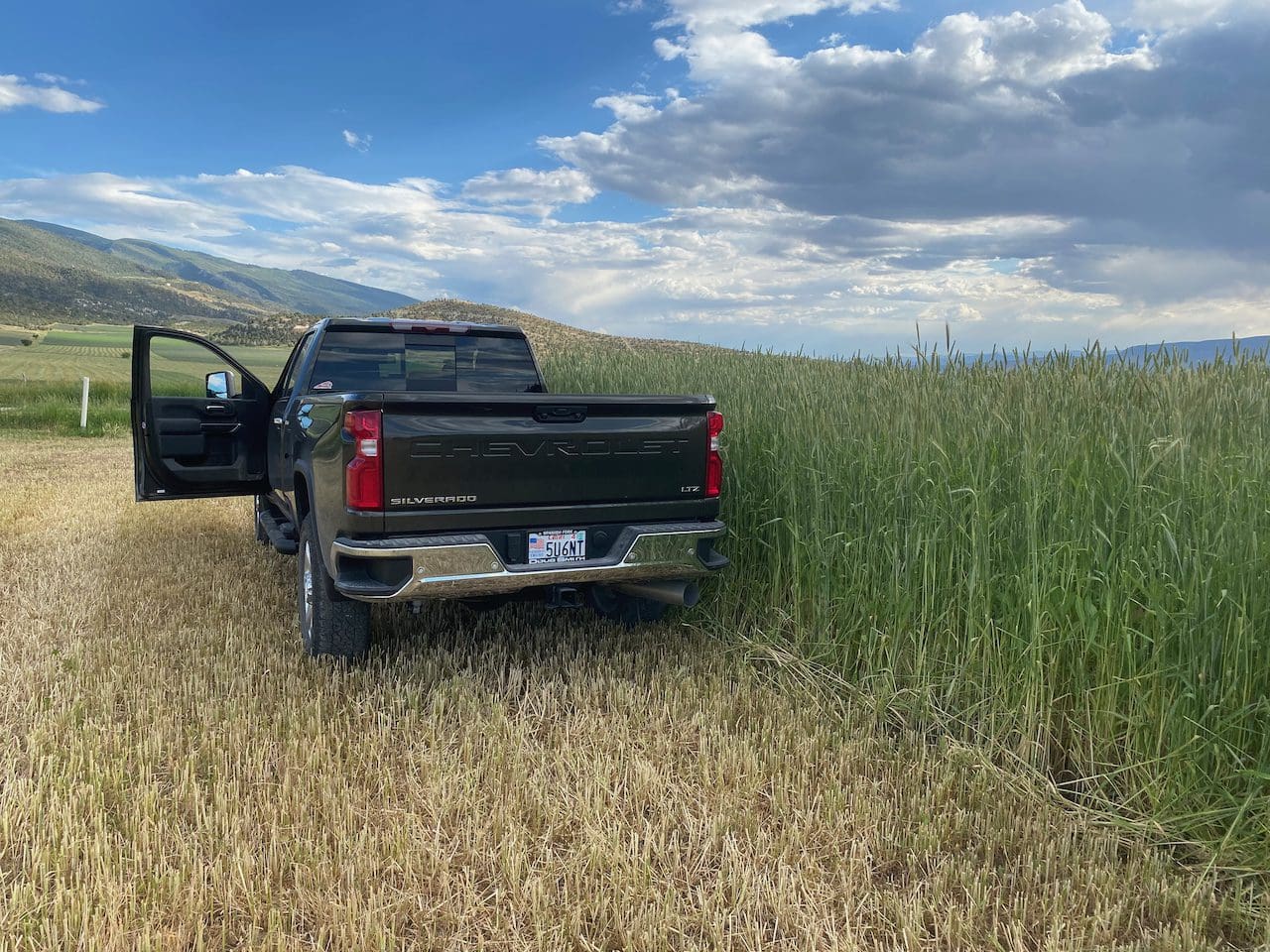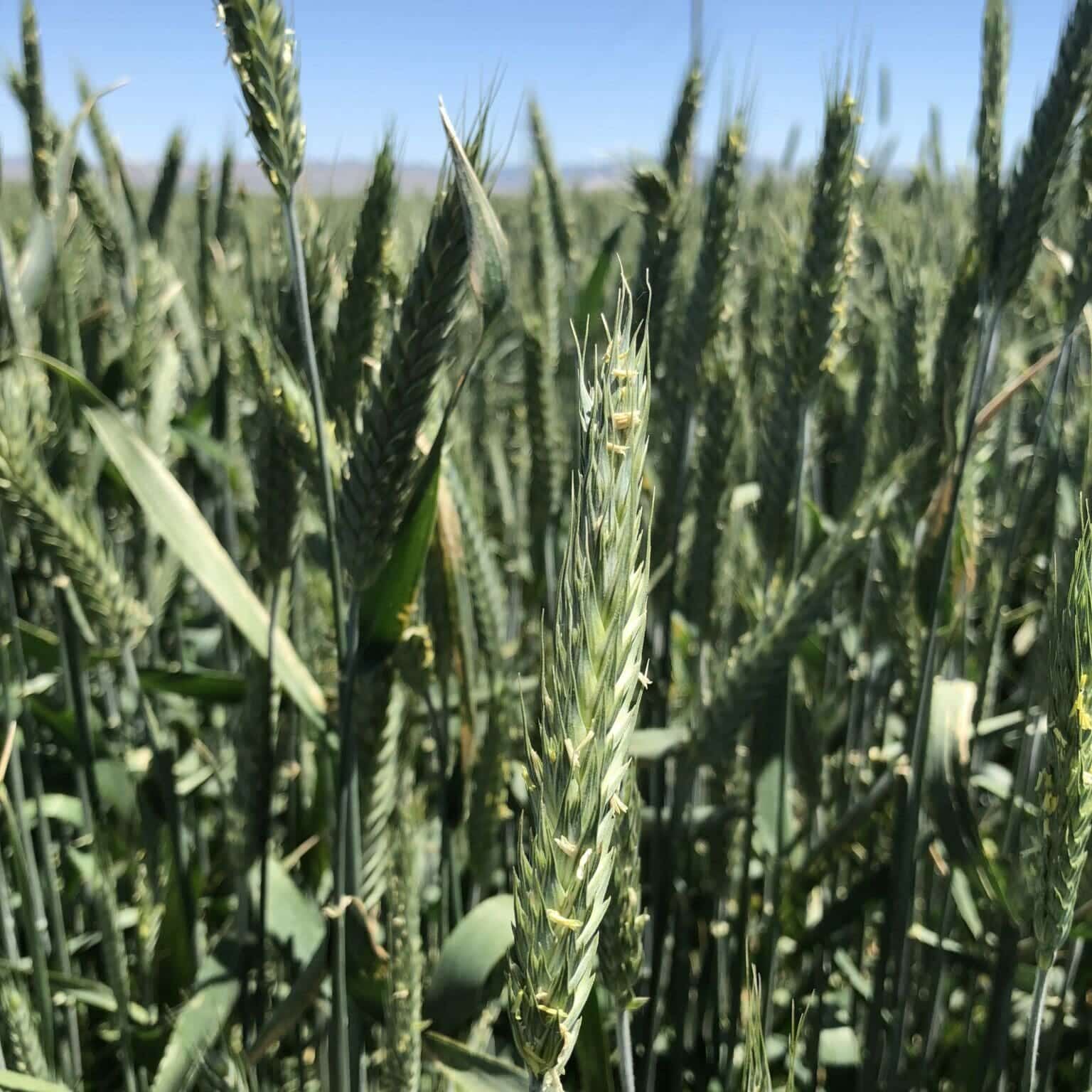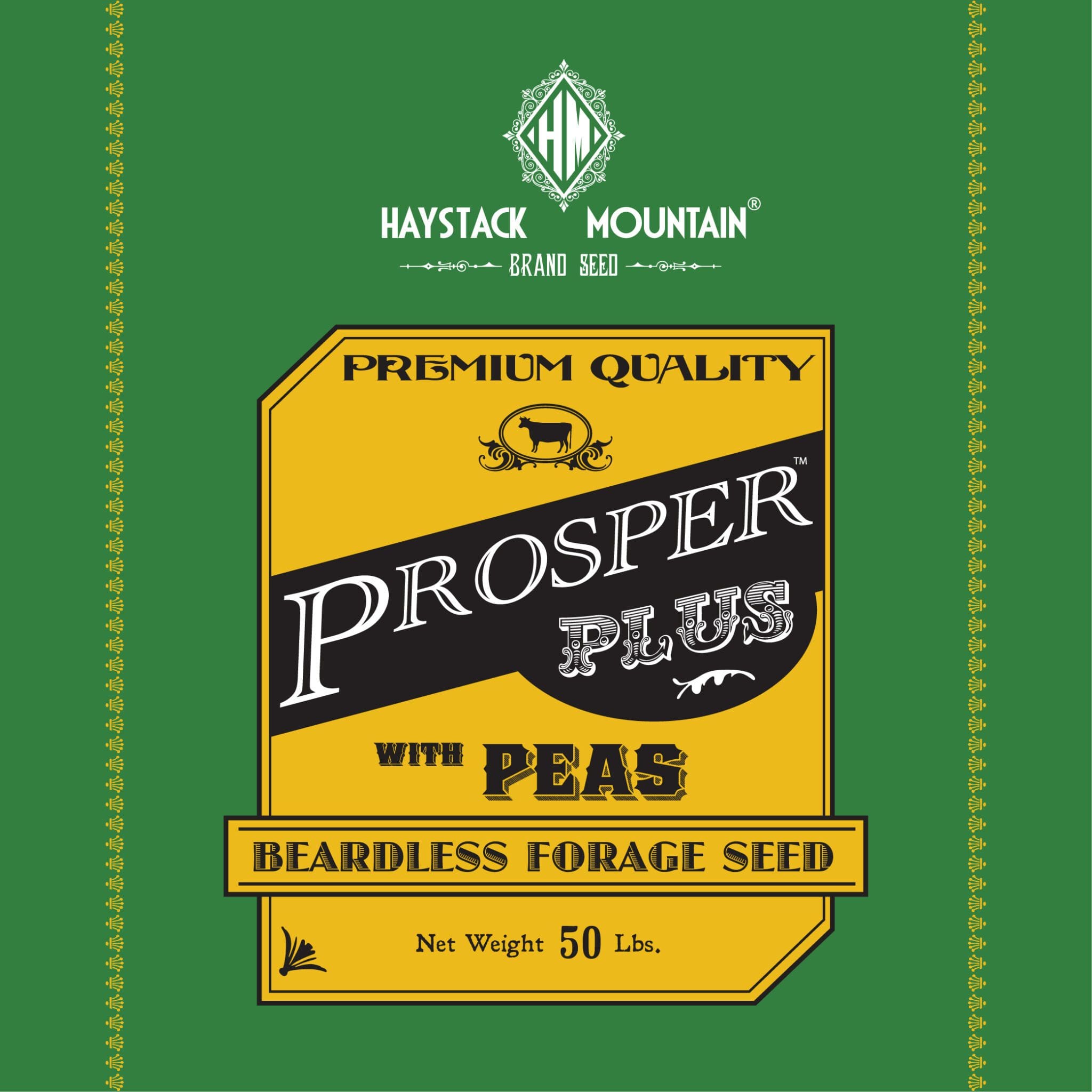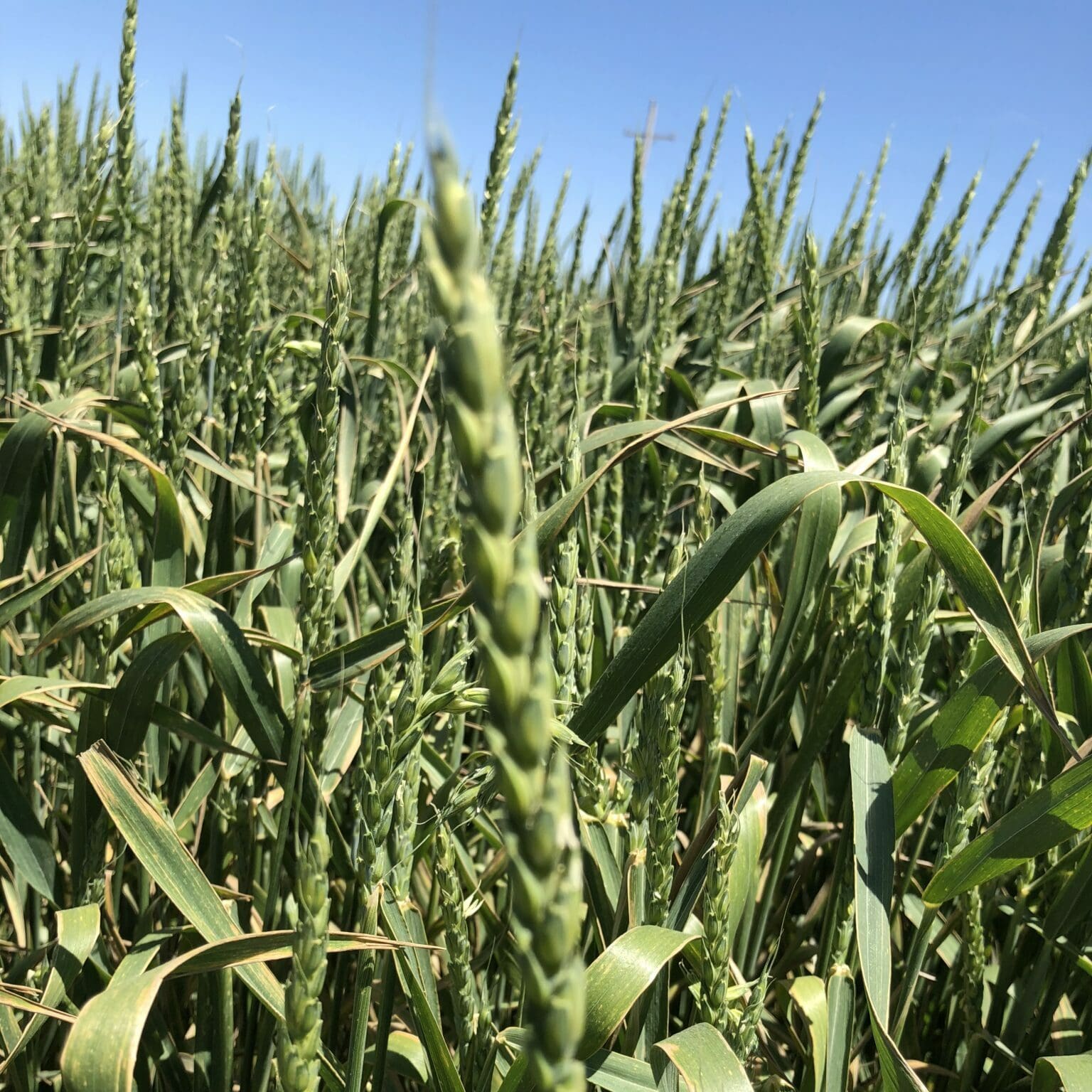Ray Hard Red Winter Wheat
- Scientific name: Triticum aestivum
- Developed for forage production
- Resistant to stripe rust
- Superior seed yield
- Hybrid of Willow Creek and Yellowstone
- Not available online. Call at 435.283.1411 to order.
Ray Hard Red Winter Wheat (Triticum aestivum) was developed by the Montana Agricultural Experiment Station and available in fall of 2018. Ray is a late maturing, tall, awnless line developed for forage production. It was developed by crossing Willow Creek Wheat and Yellowstone Wheat.
Compared to Willow Creek wheat, Ray (Triticum aestivum) has similar forage yield and forage quality but superior seed yield. In our forage fields it has been equal to or superior to Willow Creek with less lodging. Compared to conventional bread wheats Ray has average to above average yield, below average test weight, and average protein count. One benefit of Ray wheat is the ability to dual-purpose. It can be cut for hay, or run to full seed production and taken to the mill.
Ray is resistant to stripe rust and susceptible to stem rust. Ray has low PPO and average milling/baking characteristics.
Average plant height: 35 inches. In 2022 we had a local forage production field that reached an overage height of 72″
***Click on the “Quick Plant Facts” tab above for more information.
‘Ray’ Forage Winter Wheat Tech Sheet
‘Ray’ Forage Winter Wheat Tech Sheet
Winter Wheat Breeding Program
Prepared By: Phil Bruckner and Jim Berg, Winter Wheat Breeding Program, Montana State University
USDA National Agricultural Statistics
USDA National Agricultural Statistics
Montana 2021 Wheat Varieities PDF
Prepared By: Montana Wheat & Barley, USDA National Agricultural Statistics Servicem, Montana Field Office, Helena, MT
Beards, Dwarf Beards and Awnlettes
Making Sense of Grain Beards
What is the difference between “bearded” and “dwarf beard” and “beardless” varieties? How do I choose the one best for me?
The table below will help you visualize the different characteristics of each variety, if they have beards (or not) and why it matters. See our BEARDED GRAINS blog post for additional information.
| Species | Variety | Planting Season | Beard Expression | Comments |
|---|---|---|---|---|
| Oat | Otana | Spring | Beardless | Oats do not have a beard |
| Oat | Monida | Spring | Beardless | Oats do not have a beard |
| Oat | Intimidator | Spring | Beardless | Oats do not have a beard |
| Oat | Monico | Spring | Beardless | Oats do not have a beard |
| Oat | Magnum | Spring | Beardless | Oats do not have a beard |
| Oat | Everleaf™ Falcon Oat | Spring | Beardless | Oats do not have a beard |
| Oat | Everleaf™ 126 Oat | Spring | Beardless | Oats do not have a beard |
| Barley | Vaquero | Spring | Beardless | May express a beard up to 4/10,000 plants (.04%) |
| Barley | Sunstar Double | Spring | Bearded | Bearded forage barley |
| Barley | Claymore | Spring | Bearded | Bearded forage barley |
| Barley | Haymaker | Spring | Beardless | Forage barley |
| Barley | Lavina | Spring | Beardless | Forage barley |
| Barley | Goldeneye | Spring | Bearded | Grain barley |
| Barley | Sunstar Pride | Fall | Bearded | Fall forage barley |
| Barley | Valor | Fall | Beardless | Fall forage barley |
| Barley | Baldwin | Fall | Awnletted | Beard expression if planted after October 15 |
| Triticale | Merlin Max™ | Facultative | Beardless | Forage triticale |
| Triticale | Gunner™ | Facultative | Beardless | Forage triticale |
| Triticale | 131 | Fall | Beardless | Forage triticale |
| Triticale | 141 | Spring | Awnletted | 141 was used facultatively at high elevations |
| Triticale | Luoma | Fall | Awnletted | Forage triticale |
| Triticale | Flex 719™ | Facultative | Awnletted | Forage triticale |
| Triticale | FX 1001 | Fall | Nearly Beardless | FX 1001 may have up to 3% beard expression |
| Triticale | Motley™ | Facultative | Nearly Beardless | Forage triticale |
| Wheat | Jefferson | Spring | Bearded | Hard red grain wheat for milling |
| Wheat | Twin | Spring | Beardless | Soft white forage wheat |
| Wheat | Brundage | Fall | Beardless | Soft white forage wheat |
| Wheat | Ray | Fall | Beardless | Hard Red forage or milling wheat |
| Wheat | Willow Creek | Fall | Beardless | Hard Red forage or milling wheat |
| Rye | Rymin or VNS | Facultative | Bearded | Cereal forage rye |
| Peas | Austrian Winter Peas | Facultative | Beardless | Peas do not have a beard |
| Grain Mixture | Fall Forage Blend | Fall | Beardless | May contain awnletted varieties |
| Grain Mixture | Prosper 3 Grain Forage Mixture | Spring | Beardless | Forage mixture |
| Grain Mixture | Prosper Plus with Peas | Spring | Beardless | Prosper with forage peas added |
Helpful Links
Additional information about this product can be found on the academic websites linked below.
Synonyms
Many plants have more than one common and scientific name. We've listed a few of them below.
- Ray Hard Red Winter Wheat
- Triticum aestivum L
Who is Great Basin Seed?
Great Basin Seed is a seed company that specializes in seed sales and consultation for home, ranch, farm, range and reclamation. We have been a leader in the seed industry since 1974.
Our History
We've been in the seed business since 1974.
What We Offer
We offer seed for home, farm, ranch, range and reclamation projects.
Meet the Gang
We have the best employees in the world! We are proud of the work they do, and trust them to serve you!
Right: Company founder Lloyd and his wife Paula Stevens in a wildflower seed production field circa 1977
Quick Plant Facts
| Common Name: | Ray Wheat |
|---|---|
| Scientific Name: | |
| Growth Height: | |
| Lifespan: | |
| Origin: | |
| Plant Type: | |
| Growth Season: | |
| Seeds per Pound: | |
| Max Sowing Depth: | |
| Planting Rate: | |
| Best Time to Sow: | |
| Sun & Shade Tolerance: | Full Sun |
